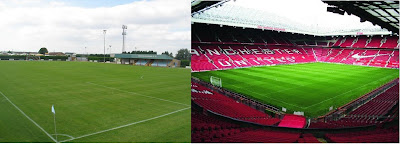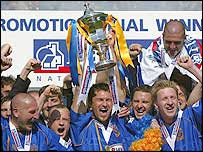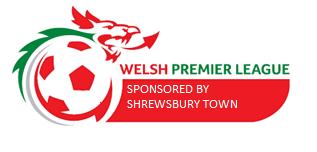So, I’ve had two or three weeks to suck it, and I can see that “Suck It and See” represents another cornerstone, if you will, in the development of Arctic Monkeys. From the pop perfection of their debut, the darker rawness of Favourite Worst Nightmare, the more abstract Humbug, comes another new side – one of proper love songs, hazier lyrics and music, as well as nods to all of their previous directions.
She’s Thunderstorms
A brilliant introduction to the album, with producer James Ford getting the first 30 seconds or so absolutely spot on with a warm, enticing sound, reminiscent of a battered old vinyl. The busy guitars in the chorus contrast with the smooth, curved vocal which flows over them before a rich guitar solo takes precedence. She’s Thunderstorms sets the contemplative, contrasting, and mellow tone which follows in most of the subsequent tracks. 9/10
Best bit: 1:13 – “She’s thunderstorms/ Lying on her front/ Up against the wall” – the first chorus kicks in heavily following an addictive introduction.
Black Treacle
A solid if unspectacular album track, Black Treacle easily saunters through the verses, with a catchy chorus followed by a flirtatious guitar hook which threatens, but never quite manages, to develop into a proper solo. Its laid-back, relaxed nature is unlike anything Arctic Monkeys have released before. 7.5/10
Best bit: 2:40 – “I feel like the Sundance Kid behind a synthesiser” – not Alex Turner’s first reference to an old film or television programme.
Brick By Brick
The first track released, unannounced, as soon as I heard the crunching opening riff I thought that however good this track is it’s going to be ten times better live. I was right. Undoubtedly the heaviest song on the album, and lyrically the simplest (of this and most other records), it is unashamed in being a fun, bouncy song which is brilliant to get stuck in to at a gig even if it is likely to be sneered at by music theorists. 8/10
Best bit: 2:14 - After a mid-song pause which Alex Turner has almost copyrighted, the final chorus kicks in for one more round of “Brick By Brick, ahhh ah ah ah ahhh”.
The Hellcat Spangled Shalalala
Soon to be the second single with very appropriate timing for this ultimate summer song. The vocal happily drifts through hazy guitars, with a simple chorus of “shalalala” following a pattern of “yeahs” and “ahs” on the tracks either side of this. The song is dragged out of its reverie in its bridge, reaching an anthemic climax which will be repeated in the campsites of many festivals this summer. 9/10
Best bit: 2:16 – “Her steady hands may well have done the devil’s pedicure” – the track reaches its peak after a climbing build-up.
Don’t Sit Down ‘Cause I’ve Moved Your Chair
The first single, but very distant from the poppy buzz of Brianstorm or Crying Lightning. Obscure lyrically, simply listing a range of pastimes preferable to sitting down into an empty chair, but nevertheless compelling with suggestions such as “go into business with a grizzly bear” and “do the Macarena in the devil’s lair”. It seems to be kept purposely slow, especially live, and could easily be described as Classic Rock, but still has an irresistible round of “yeah yeah yeahs” in the chorus. Chiming guitars move this track further into stadium territory. 8/10
Best bit: 1:59 - “Do the Macarena in the devil’s lair”, before exploding into the final chorus.
Library Pictures
The set opener on their recent North American tour, Library Pictures sounds musically like Arctic Monkeys did in 2005 but with nonsensical lyrics. Quick-paced, catchy and aggressive, I can’t help but feel it seems slightly out of place here for precisely the opposite reason that Riot Van did on the debut. 8/10
Best bit: 1:29 - The countdown before the solo kicks in is a fantastic way to get people going at the start of a gig.
All My Own Stunts
Disappointing. With Josh Homme on backing vocals, much was expected from this track but it has failed to deliver. A clumsy opening riff kicks in and it and lumbers along through the verses, and whilst the chorus picks up a little bit, it’s nowhere near Arctic Monkeys standard. A line in the chorus referring to dancing shoes inspires a reflection on how far the band have come since the first album, but in this particular case, it just leaves me yearning for past hooks. Others may disagree, but anyone who says this track lives up to their expectations is lying. Sorry. 4/10
Best bit: 3:47 – “I’m from High Green!” - It’s always nice to hear a band remembering their roots.
Reckless Serenade
All is forgiven though as the second this bass line begins, you know instantly you’re in for three minutes of pop perfection. Streamed online before the album release, I freely admit that it took a while for this track to grow on me, but now I’m hooked. Layers are added on as the track progresses before an addictive solo meanders through the end of the song. This track beautifully lives up to its name from the awkward, lovestruck protagonist. 9.5/10
Best bit: 1:29 – “Call up to listen to the voice of reason, and got his answering machine/I left my message but did he fuck get back to me” – A lyric which would no other vocalist could get away with, pulled off exquisitely.
Piledriver Waltz
Another song heard before the album’s release, albeit in a different form on the Submarine soundtrack, some reviewers have criticised this re-recording for not being as good as the original. This is probably true, but in my opinion it is splitting hairs as this is a wonderful, beautiful song and possibly the most emotional Arctic Monkeys song released. One of the few songs on this record which hits you instantly, the advice “If you’re gonna try and walk on water make sure you wear your comfortable shoes” is yet another line which only Alex Turner could pull off. Still, not as good as the more stripped back Submarine version. 9.5/10
Best bit: 0:50 - When the first chorus kicks in with the time-change - “You look like you’ve been for breakfast at the heartbreak hotel/ And sat in the back booth by the pamphlets and the literature on how to lose”.
Love Is a Laserquest
A critic referred to the second half of Radiohead’s The King of Limbs as “love songs for the damned”. In that vein, the second half of Suck It and See is love songs for you, me, and everyone else. They have built on their more one-dimensional slower efforts from the past, such as Only Ones Who Know, and Love Is a Laserquest demonstrates this progress perfectly. Emotive lyrics we can all relate to fit perfectly with Turner’s quirky unique voice, sung hauntingly over soft guitars and a quiet, affecting rhythm section. 8/10
Best bit: 0:58 – “And do you look into the mirror to remind yourself you’re there/ Or have someone’s goodnight kisses got that covered/ Well I’m not being honest, I’ll pretend that you were just some lover” – Delivered brilliantly.
Suck It and See
I have a bit of a personal agenda here, since when I saw Arctic Monkeys in Montreal this song was played for the first time, so I wanted it to be brilliant for future “I was there” conversations. Luckily for me, this is perhaps the highpoint of the entire album. Beautiful verses and an instantly addictive chorus build to a “You have got that face that just says ‘baby, I was made to break your heart’”. Some reviewers have claimed to have had a lump in their throat at this point, and whilst I won’t go quite that far it truly does pull on your emotions in a way that not many bands will ever achieve. 9.5/10
Best bit: 0:17 and 1:17 - Difficult to pick, but the lines “You’re rarer than a can of dandelion and burdock/ And those other girls are just post-mix lemonade” and “That’s not a skirt girl that’s a sawn-off shotgun/ And I can only hope you’ve got it aimed at me” are simple genius.
That’s Where You’re Wrong
More The Jeweller’s Hands than A Certain Romance or 505, the closing track grows and grows subtly, both throughout the song and on each listen. Its drifting melodies and esoteric, detached lyrics finish the album perfectly, and from the breakdown in the middle to the closing refrain of “that’s where you’re wrong”, this new, mellow side of Arctic Monkeys is displayed definitively. 9/10
Best bit: 2:08 – The song strips down before building up to a brilliant final chorus and what feels like the summary of the entire album.
Overall
It’s naturally a great sign when a band can evolve so successfully, and whilst this album still retains many hallmarks of previous albums, it presents a more mature sound. The production is spot on, the album flows through the whole tracklisting and the if minimalist cover art is good enough for The Beatles, it’s good enough for everyone else too. 9/10.





























